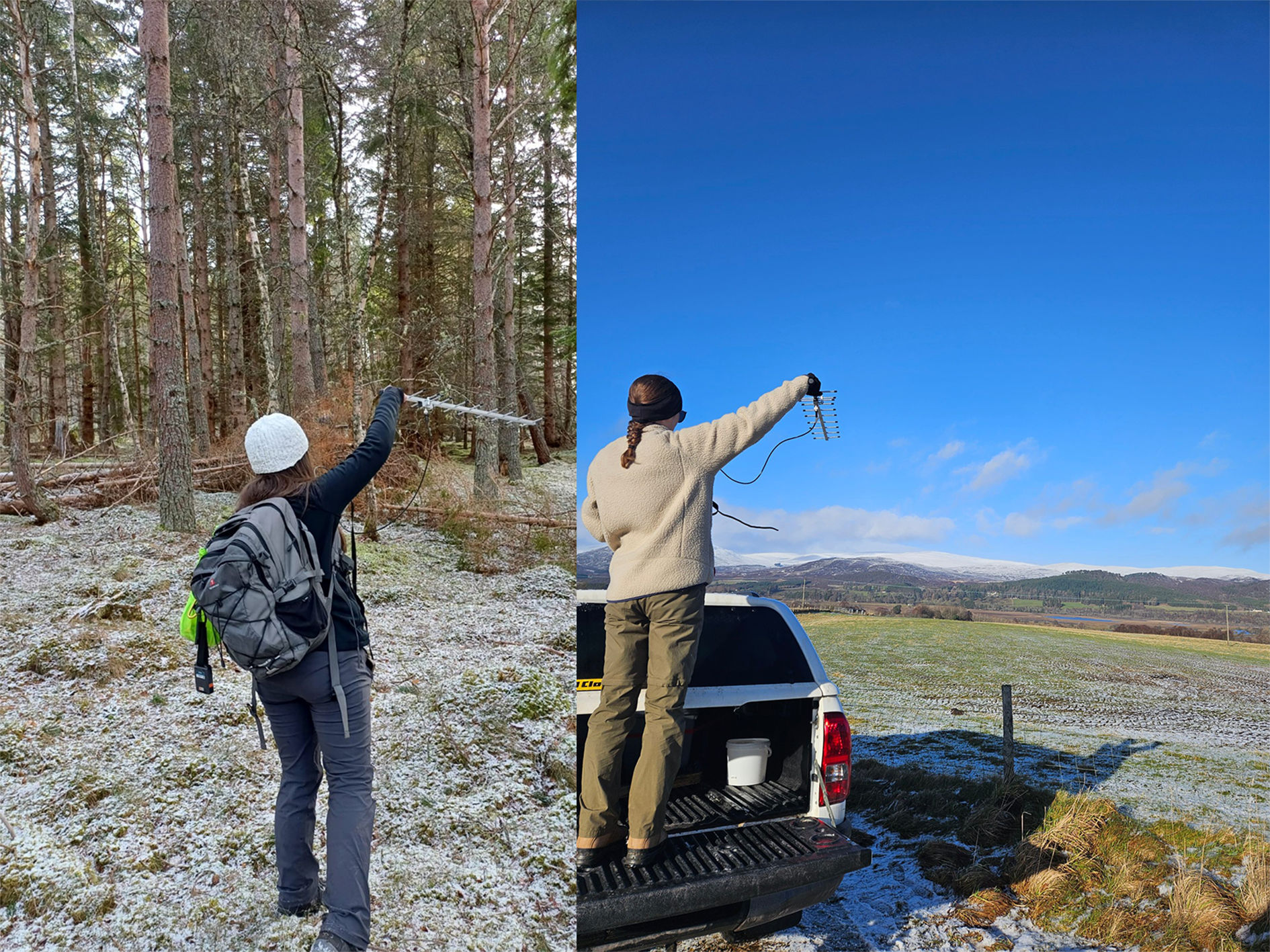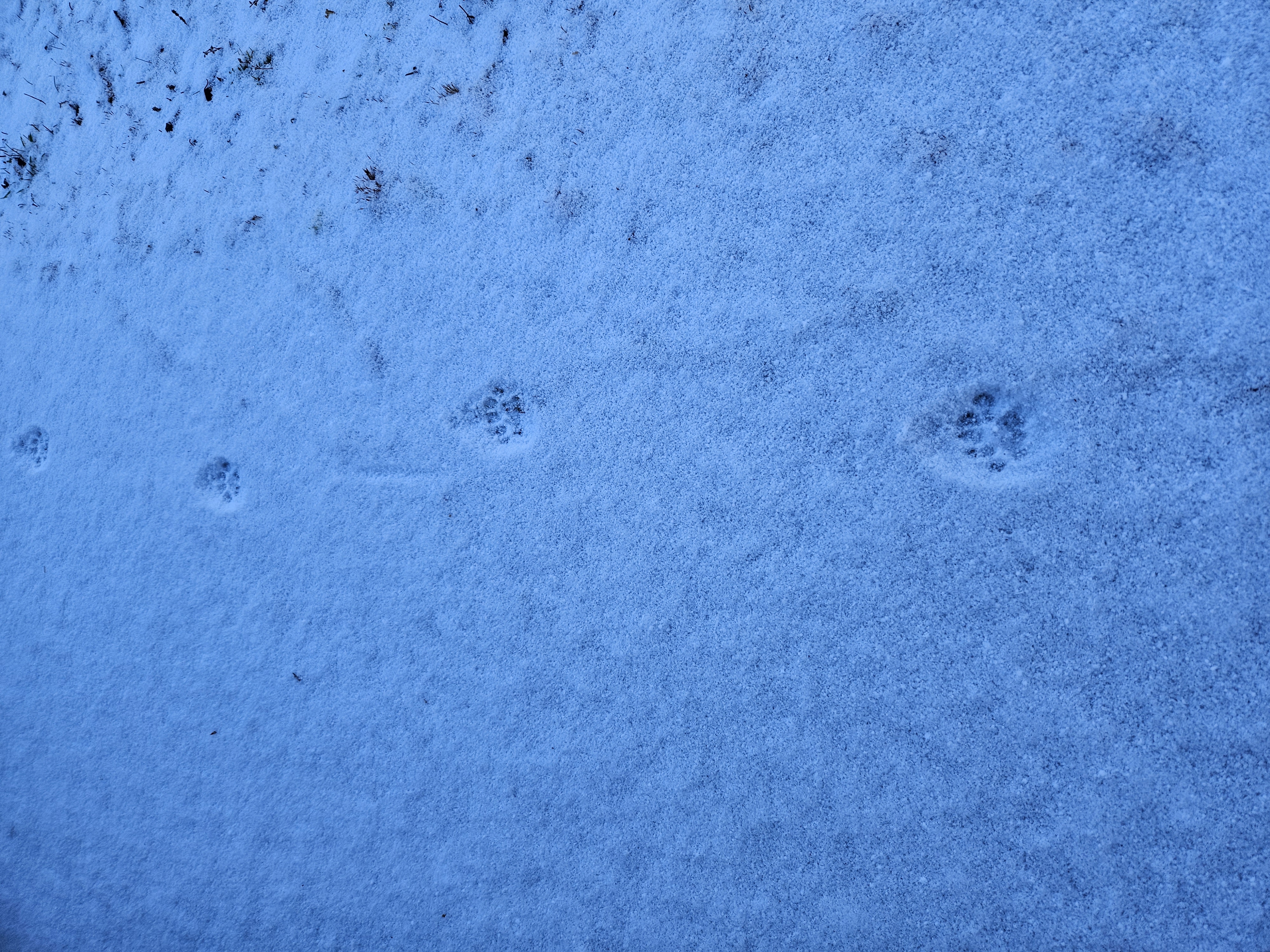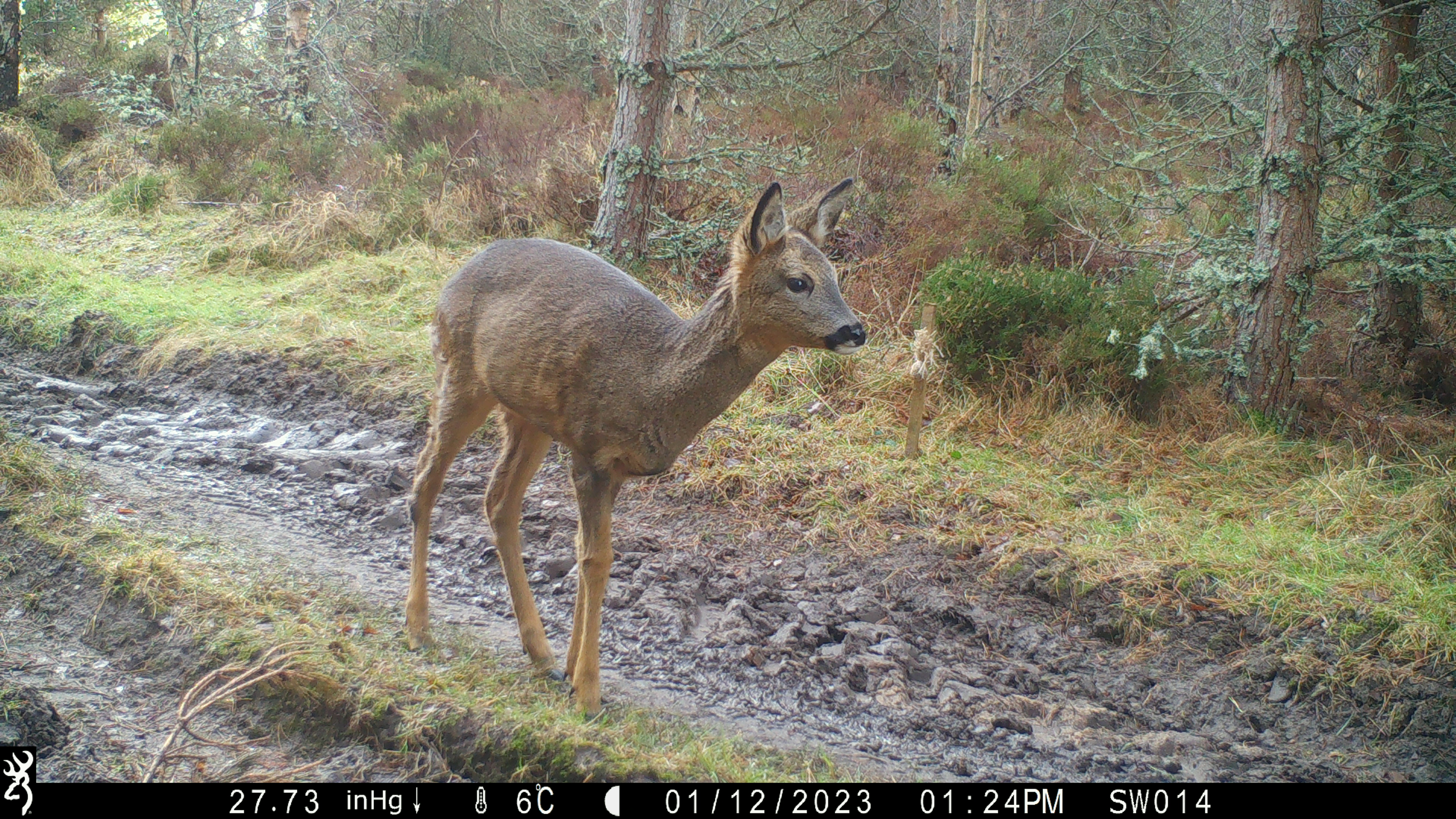National Volunteers' Week 2024: A blog from Saving Wildcats volunteers
Earlier this year, Saving Wildcats volunteers, Imogen and Sianise, wrote a blog about their time volunteering with the project. This National Volunteering Week, we want to say a huge thank you to all the volunteers that have helped support the Saving Wildcats partnership.
We are Imogen and Sianise, volunteers with the Saving Wildcats partnership! We joined the in-situ team after graduating from courses in Zoology (Sianise) and Ecology and Wildlife Conservation (Imogen) to gain practical experience working on this exciting project.
Our volunteer placement started in early January in balmy -8℃, which was certainly a shock to our systems having arrived from milder winters. We got straight into the field work, heading out with project officers to learn the ropes of tracking the wildcats. The cats on this project are tracked using GPS-radio collars, which means our job largely involves travelling around the Cairngorms to download GPS data collected by the wildcats’ collars. On day one, learning the locations from which we could download data, how to get between them, and doing this all within time constraints of collars emitting only at certain times, felt like a sizeable challenge - but we were up for it!

Tracking for the first month was spent with project officers to build our confidence and knowledge of the area. This was a great opportunity to get all of our questions answered about the project, as well as develop our relationships with the team. This first month proved invaluable in preparing us to head out tracking - firstly as a pair, then independently. Not only has tracking the cats presented us with the opportunity to gain skills in radio tracking but also to explore the stunning Cairngorms National Park, rain or shine… or snow.

We’ve also had the opportunity to investigate the GPS data that has been collected. We look at the data each day after we have finished, taking note of where they’ve travelled, how far and if there are any territory crossovers. During the breeding season, looking into the individuals who have crossed paths is a useful indicator of which cats could be potential breeding pairs.
The role isn’t solely fieldwork, we have some office days too, or as we call them, DigiKam days. DigiKam is a free image tagging software that is used by the project to tag images collected from camera trap surveys. In each image we are looking to identify any species present, tagging their common and Latin names, the number of individuals and keeping a watchful eye for any cats. As technical and exciting as it sounds, our office days require some serious concentration skills because we are faced with thousands of untagged images and no image gets left behind. Never have we questioned our ability to confirm whether that rabbit is a rabbit. Or is it a hare? No, it’s definitely a rabbit!

We were lucky enough to arrive during the trapping for recollaring period. This process is necessary to replace GPS-radio collars with low battery for continued monitoring of the wildcats. Although it’s a busier time of year, where the day-to-day is never set in stone, it has meant that we have been able to be involved with the trapping process. This has given us great insight into reactive work and problem solving - making plans with wild animals isn’t as simple as ‘let’s meet at 7pm’.
As well as all the valuable conservation experience and the chance to work alongside a knowledgeable team, volunteering with the project has provided us with an exciting new place to live and explore - and make great new friends with like-minded people. As a part of the volunteer package, the project provides free, shared accommodation which we share with ex-situ volunteers. It’s a great way to hear about their side of the project and makes for fun and social evenings. Did someone say movie night?
We have loved our time here at Saving Wildcats, from the skills and knowledge we have gained, to the connections and friendships we’ve made, we are truly grateful for the experience, and to the team, having been involved in such an important conservation project, and are excited for the future of wildcats in Scotland!

